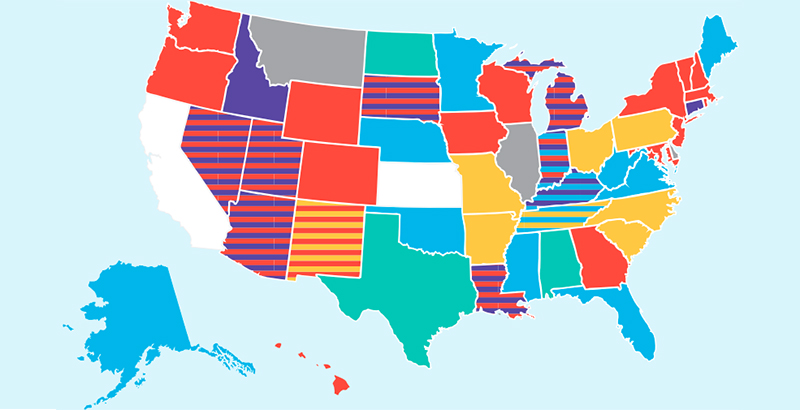This Week’s ESSA News: So How Exactly Are We Supposed to Measure Graduate ‘Readiness’ After High School, Anyway?

This update on the Every Student Succeeds Act and the education plans now being implemented by states and school districts is produced in partnership with ESSA Essentials, an ongoing series from the Collaborative for Student Success. It’s an offshoot of their ESSA Advance newsletter, which you can sign up for here! (See our recent ESSA updates from previous weeks right here.)
Education Week’s Andrew Ujifusa reports that federal education officials have “released proposed guidance to schools about a provision of the Every Student Succeeds Act that prohibits schools from cutting state and local money from education and simply filling the hole with federal funding.” This guidance “clearly states that districts do not need to ensure that there is equal per-pupil spending between Title I schools (those with relatively high shares of low-income students) and non-Title I schools.”
Additionally, the guidance says that districts don’t have to “make their method for ensuring federal dollars don’t replace state and local money easily accessible to the public — specifically, the district doesn’t have to post it on its website.” The guidance also notes that “districts can’t simply use per-pupil spending data to show compliance with ‘supplement-not-supplant.’”
In other federal ESSA news, Ujifusa’s colleague Alyson Klein reports that, starting this week, states will be able to apply for $387 million in competitive funding from the U.S. Department of Education to put toward innovative assessments. “As required by the Every Student Succeeds Act, the department is looking to give grants to states that want to do some outside-the-box things, including measuring student growth from different sources.” The application process will incentivize states to develop assessments that align with the Department’s priorities “beyond what’s required by ESSA.” This includes bonus points for states looking to “develop better literacy tests” and states that “want to improve science, math, engineering, and technology assessments.”
Other notable updates this week:
“Hodgepodge” of state approaches to measuring readiness after high school
States are taking a varied approach to measuring post-high school readiness, according to Education Week’s Klein. An upcoming analysis from Education Strategy Group, Advance CTE, and Achieve finds that “nearly every state is gauging school performance in part by whether students show that they are ready for life after high school.”
Klein notes that the big reason for this is that “states had to choose at least one measure of school quality or student success — something beyond test scores — under the Every Student Succeeds Act. Career readiness was by far one of the most popular choices.” In total, 44 states have college and/or career readiness as part of their accountability systems, “whether for ESSA or under state systems for rating schools.”
Data Quality Campaign asks how states are measuring student growth under ESSA
A new DQC report — “Growth Data: It Matters, and It’s Complicated” — seeks to provide a primer regarding how states are measuring growth as part of their ESSA accountability systems to “evaluate school quality and support improvements,” Education Week reports, noting that the DQC analysis cites “measures of student growth [as offering] a richer understanding of student performance than a moment-in-time test score alone, but measures of student growth are not created equal.” While “some states are using a sophisticated analysis of multiple data points that evaluate the impact of schools on student learning,” others “are using simpler measures of change in student assessment results year to year.” These varied measurement approaches will “answer different questions and tell different stories about what is happening in schools and classrooms.” (Read more at The 74: “Not All Student Growth Is Created Equal”)
Helping military students succeed
Military Families for High Standards’ Christi Ham writes in RealClearEducation about how ESSA’s Military Student Identifier can help military families manage the many challenges they face — and help military-connected students succeed.
She notes three categories of best practices from districts with large military-student populations that other districts serving military students and families should keep in mind. These include engaging with students when they arrive, ensuring teachers and other staff members are trained to “better meet the challenges and opportunities of educating military-connected students,” and more. If “we want our military-connected students to succeed,” Ham concludes, “we need to help our local school districts learn the lessons of those that have already implemented their version of the MSI.”
Get stories like these delivered straight to your inbox. Sign up for The 74 Newsletter

;)